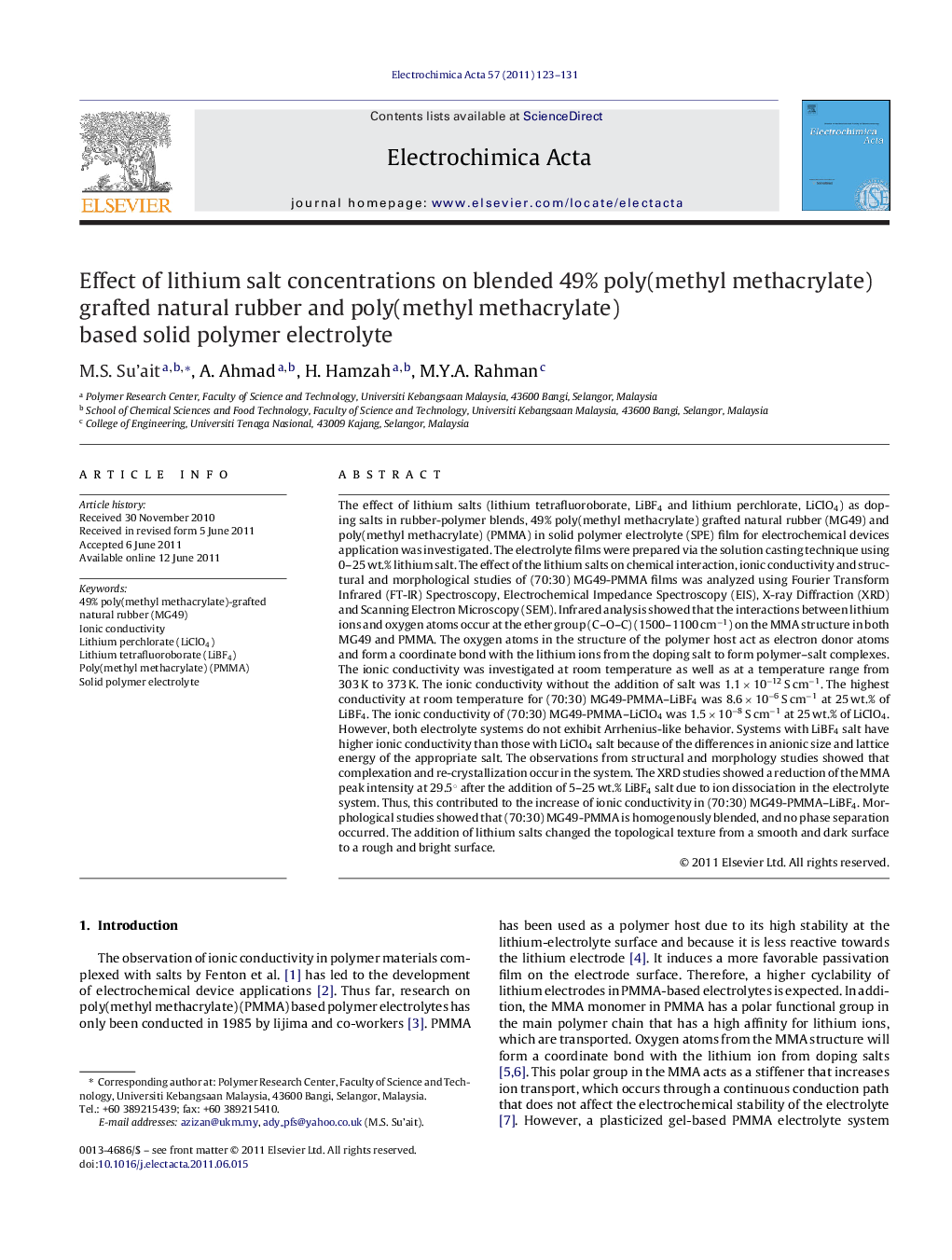| کد مقاله | کد نشریه | سال انتشار | مقاله انگلیسی | نسخه تمام متن |
|---|---|---|---|---|
| 189915 | 459689 | 2011 | 9 صفحه PDF | دانلود رایگان |

The effect of lithium salts (lithium tetrafluoroborate, LiBF4 and lithium perchlorate, LiClO4) as doping salts in rubber-polymer blends, 49% poly(methyl methacrylate) grafted natural rubber (MG49) and poly(methyl methacrylate) (PMMA) in solid polymer electrolyte (SPE) film for electrochemical devices application was investigated. The electrolyte films were prepared via the solution casting technique using 0–25 wt.% lithium salt. The effect of the lithium salts on chemical interaction, ionic conductivity and structural and morphological studies of (70:30) MG49-PMMA films was analyzed using Fourier Transform Infrared (FT-IR) Spectroscopy, Electrochemical Impedance Spectroscopy (EIS), X-ray Diffraction (XRD) and Scanning Electron Microscopy (SEM). Infrared analysis showed that the interactions between lithium ions and oxygen atoms occur at the ether group (C–O–C) (1500–1100 cm−1) on the MMA structure in both MG49 and PMMA. The oxygen atoms in the structure of the polymer host act as electron donor atoms and form a coordinate bond with the lithium ions from the doping salt to form polymer–salt complexes. The ionic conductivity was investigated at room temperature as well as at a temperature range from 303 K to 373 K. The ionic conductivity without the addition of salt was 1.1 × 10−12 S cm−1. The highest conductivity at room temperature for (70:30) MG49-PMMA–LiBF4 was 8.6 × 10−6 S cm−1 at 25 wt.% of LiBF4. The ionic conductivity of (70:30) MG49-PMMA–LiClO4 was 1.5 × 10−8 S cm−1 at 25 wt.% of LiClO4. However, both electrolyte systems do not exhibit Arrhenius-like behavior. Systems with LiBF4 salt have higher ionic conductivity than those with LiClO4 salt because of the differences in anionic size and lattice energy of the appropriate salt. The observations from structural and morphology studies showed that complexation and re-crystallization occur in the system. The XRD studies showed a reduction of the MMA peak intensity at 29.5° after the addition of 5–25 wt.% LiBF4 salt due to ion dissociation in the electrolyte system. Thus, this contributed to the increase of ionic conductivity in (70:30) MG49-PMMA–LiBF4. Morphological studies showed that (70:30) MG49-PMMA is homogenously blended, and no phase separation occurred. The addition of lithium salts changed the topological texture from a smooth and dark surface to a rough and bright surface.
Journal: Electrochimica Acta - Volume 57, 15 December 2011, Pages 123–131